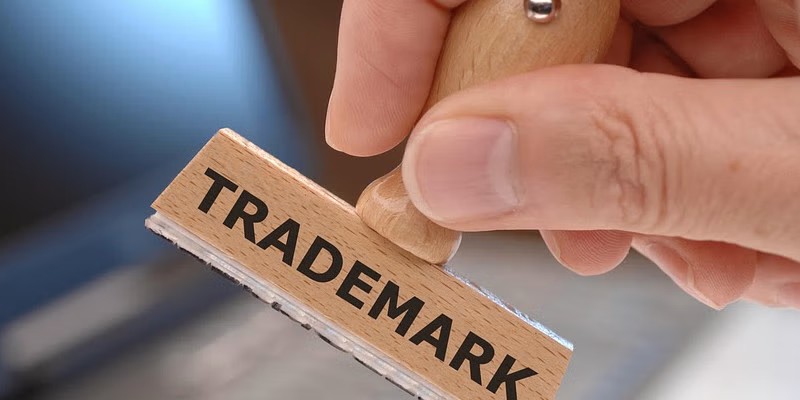Early Legal Battles and Settlements
The history of talcum powder lawsuits stretches back several decades, with the first legal battles emerging as early as the 1970s. These initial cases were primarily concerned with the potential health risks associated with talc-containing products, particularly in relation to ovarian cancer. Early plaintiffs alleged that manufacturers failed to warn consumers about the dangers of using talcum powder, especially in the genital area. These cases often resulted in settlements, as companies sought to avoid the negative publicity of prolonged courtroom battles.
Major Lawsuits Against Johnson & Johnson
Johnson & Johnson, a leading manufacturer of talcum powder, has faced a significant number of lawsuits over the years. The most notable of these began in the 2010s, when thousands of plaintiffs claimed that the company’s talc products were contaminated with asbestos, a known carcinogen. These lawsuits were consolidated into a multidistrict litigation (MDL) in New Jersey, allowing for more efficient processing of cases. Plaintiffs argued that Johnson & Johnson was aware of the contamination risks but continued to market their products as safe. The legal battles have resulted in several high-profile verdicts, with juries awarding substantial damages to plaintiffs who developed cancer after using talcum powder.
Impact on the Cosmetic Industry
The wave of talcum powder lawsuits has had a profound impact on the cosmetic industry as a whole. Many companies have reevaluated the safety of their talc-based products, with some choosing to reformulate or discontinue them altogether. Retailers have also responded by removing talc-containing products from their shelves, further influencing consumer perception. The litigation has prompted increased scrutiny of product safety standards and has spurred discussions about the need for more stringent regulatory oversight. This shift reflects a growing awareness of potential health risks and has led to a broader examination of ingredient safety in cosmetics.
Understanding the Link Between Talc and Cancer
Scientific Studies and Findings
Research into the connection between talcum powder and cancer has been ongoing for decades. Scientific studies have primarily focused on two main areas: the potential for talc to cause ovarian cancer and the presence of asbestos in talc products leading to mesothelioma. Some studies suggest a correlation between genital talc use and ovarian cancer, while others find no significant risk. The inconsistency in results highlights the complexity of proving a definitive link. Researchers continue to investigate how talc particles might travel through the reproductive system and potentially cause inflammation, which could lead to cancer.
Role of Asbestos in Talc Products
Talc, in its natural form, can sometimes contain asbestos, a known carcinogen. The presence of asbestos in talc products has been a major concern, as asbestos exposure is strongly linked to mesothelioma, a rare but aggressive cancer. Regulatory agencies have set guidelines to ensure that cosmetic talc is free from detectable asbestos. However, the effectiveness of these measures has been questioned, as some lawsuits allege that contaminated talc was still sold to consumers. The legal battles, including those handled by firms like Morgan and Morgan, often center around whether companies knew about asbestos contamination and failed to act.
Health Risks Associated with Talcum Powder
The health risks related to talcum powder are not limited to cancer. Concerns have been raised about respiratory issues, especially in occupational settings where talc dust might be inhaled. For consumers, the primary focus remains on the potential cancer risks, particularly ovarian cancer and mesothelioma. Despite the debates, many experts recommend caution in the use of talcum powder, especially in the genital area. Ongoing legal cases continue to explore these health risks, with plaintiffs seeking justice for the harm they believe talcum powder has caused.
Types of Cancer Linked to Talcum Powder
Ovarian Cancer and Talcum Powder
One of the primary concerns with talcum powder is its potential link to ovarian cancer. The issue arises when talcum powder is used for feminine hygiene. Some studies have suggested that talc particles can travel through the female reproductive system and reach the ovaries, possibly causing inflammation which may increase the risk of cancer. While some research supports this connection, the scientific community has not reached a consensus. Nevertheless, numerous lawsuits, litigated by firms like Sokolove Law, have been filed by women who believe their ovarian cancer is linked to talc use.
Mesothelioma and Asbestos Exposure
Mesothelioma is another cancer type closely associated with talcum powder, primarily due to asbestos contamination. Asbestos is a known carcinogen, and when talc is mined, it can sometimes be contaminated with asbestos fibers. Inhalation of these fibers can lead to mesothelioma, a cancer affecting the lining of the lungs, abdomen, or heart. This has been a significant focus in legal cases, as plaintiffs argue that companies failed to ensure their talc products were asbestos-free.
Other Potential Cancer Risks
Beyond ovarian cancer and mesothelioma, there are concerns about other potential cancer risks associated with talcum powder. Some studies have hinted at a possible link between talc and endometrial cancer, particularly in postmenopausal women. However, evidence is not as strong or conclusive. Additionally, while lung cancer has been considered due to inhalation of talc dust, especially in occupational settings, the evidence remains mixed. The ongoing research and litigation continue to explore these potential risks, with legal teams like Sokolove Law actively involved in seeking justice for affected individuals.
Legal Grounds for Filing a Talcum Powder Lawsuit
Product Liability and Negligence
When it comes to filing a lawsuit over talcum powder, the primary legal theory is often “product liability.” This means that the manufacturer, like Johnson & Johnson, could be held responsible if their product is found to be defective or unsafe. Plaintiffs typically argue that the talcum powder they used was contaminated with asbestos, which is known to cause cancer. Additionally, negligence can also play a role. This involves proving that the company failed to exercise reasonable care in the production or testing of their products, leading to harmful effects on consumers.
Failure to Warn Consumers
Another significant aspect is the “failure to warn” claim. Companies are expected to inform consumers about any potential risks associated with their products. In the case of talcum powder, plaintiffs argue that manufacturers did not adequately warn users about the cancer risks linked to asbestos contamination. This claim hinges on the idea that consumers would have made different choices if they had been properly informed of the dangers.
Proving Causation in Court
Proving causation is crucial in these lawsuits. Plaintiffs must demonstrate a direct link between their cancer diagnosis and the use of talcum powder. This involves gathering substantial scientific evidence and expert testimony to support their case. Lawyers, such as those from Pintas and Mullins Law Firm work diligently to establish this connection, often relying on medical records, research studies, and expert witnesses. Successfully proving causation can significantly impact the outcome of the lawsuit, ensuring that those affected receive the compensation they deserve.
Challenges in Talcum Powder Litigation
Statute of Limitations Issues
One of the major hurdles in talcum powder litigation is the statute of limitations. Each state has its own deadline for filing a lawsuit, which can range from one to several years after the injury or diagnosis. This can be particularly challenging for plaintiffs who may not immediately connect their health issues to talcum powder use. Delays in diagnosis or the realization of the product’s potential harm can complicate timely legal action. Legal teams, such as those at Ben Crump Law Office, often have to work diligently to ensure claims are filed within these critical timeframes.
Scientific Evidence and Expert Testimony
Proving a link between talcum powder and cancer in court requires robust scientific evidence and expert testimony. Courts demand clear, reliable studies that demonstrate causation, which can be a complex and contentious process. Experts must be able to convincingly present their findings, often facing intense scrutiny from corporate defense teams. This makes the selection of knowledgeable and credible experts vital to the success of a case.
Defending Against Corporate Legal Teams
Plaintiffs often face formidable corporate legal teams with significant resources at their disposal. These teams are experienced in defending against product liability claims and can employ a variety of strategies to undermine a plaintiff’s case. This includes challenging the credibility of scientific evidence, questioning the reliability of expert witnesses, and leveraging procedural tactics to delay proceedings. Law firms like Ben Crump Law Office must be prepared to counter these strategies effectively, requiring a deep understanding of both the legal landscape and the specifics of each case.
Recent Developments in Talcum Powder Lawsuits
Notable Case Outcomes
In recent years, the legal landscape surrounding talcum powder lawsuits has seen significant shifts. One of the most prominent developments was Johnson & Johnson’s decision to settle a large number of claims. In June 2024, they reached a $700 million settlement with 42 states and the District of Columbia. This settlement addressed allegations of misleading marketing practices, particularly the failure to adequately warn consumers about the potential risks of using talc-based products. Although Johnson & Johnson did not admit any wrongdoing, they agreed to cease the sale of talcum powder products permanently.
Changes in Legal Precedents
The ongoing litigation has also led to changes in legal precedents, particularly concerning how these cases are handled in court. The introduction of multidistrict litigation (MDL) has streamlined the process, allowing for thousands of individual cases to be managed more efficiently. This is crucial given the sheer volume of lawsuits, with over 50,000 cases consolidated in the U.S. District Court for the District of New Jersey. Such legal frameworks help ensure that plaintiffs, like those represented by Gori Law, can pursue justice in a more organized manner.
Impact on Future Litigation
These legal battles have set the stage for future litigation strategies. The establishment of settlement funds, like the one proposed by Johnson & Johnson, indicates a shift towards resolving claims through financial compensation rather than prolonged court battles. This approach could influence how other companies, such as Avon and Revlon, handle their talc-related liabilities. Moreover, the involvement of firms like Gori Law highlights the importance of specialized legal expertise in navigating these complex cases. As more consumers become aware of the potential health risks, the number of lawsuits is likely to grow, prompting further changes in how such cases are litigated.
The Role of Regulatory Agencies
FDA Guidelines on Talc Products
The Food and Drug Administration (FDA) plays a crucial role in regulating talc products to ensure consumer safety. While the FDA does not approve cosmetics before they hit the market, it monitors their safety through post-market surveillance and can take action if products are found to be unsafe. The FDA has conducted several studies to detect asbestos in talc-containing cosmetics, as asbestos contamination is a significant concern due to its link with cancer. Although the FDA has not found asbestos in the samples tested, the agency continues to monitor the situation closely.
Consumer Safety and Product Testing
Regulatory agencies emphasize the importance of rigorous product testing to protect consumers from potential health risks. The FDA encourages manufacturers to conduct thorough testing of their talc products to ensure they are free from asbestos contamination. This includes using advanced testing methods to detect even trace amounts of asbestos. Consumers are advised to stay informed about the products they use and to be cautious of any recalls or safety warnings issued by regulatory bodies.
Regulatory Actions and Recalls
When it comes to protecting public health, regulatory agencies have the authority to issue recalls and take action against companies that fail to comply with safety standards. In March 2024, the Environmental Protection Agency (EPA) announced a ban on the ongoing uses of chrysotile asbestos to safeguard public health against various cancers, including lung cancer, mesothelioma, ovarian cancer, and laryngeal cancer. This move highlights the commitment of regulatory bodies to reduce exposure to hazardous substances and protect consumers from potential harm. The collaboration between agencies like the FDA and EPA ensures a comprehensive approach to managing risks associated with talc and asbestos.
Choosing the Right Attorney for Your Case
Qualities to Look for in a Lawyer
When you’re looking for a lawyer to handle your talcum powder lawsuit, there are several key qualities to consider:
- Experience in Similar Cases: Ensure the lawyer has a track record of dealing with talcum powder lawsuits or similar product liability cases. This experience is crucial as it means they know the ins and outs of such cases, including how to handle big corporations.
- Reputation and Credibility: Research the lawyer’s reputation. Look for reviews, ask for referrals, and check their standing with the state bar association. A lawyer with a good reputation is more likely to be respected by judges and opposing counsel.
- Communication Skills: You want a lawyer who can explain complex legal terms in simple language and keeps you updated on your case. Good communication is key to ensuring you’re always in the loop.
Questions to Ask During Consultation
Before hiring a lawyer, it’s important to ask the right questions to gauge their suitability:
- What is your experience with talcum powder lawsuits? Understanding their background in similar cases will give you confidence in their ability to handle your case.
- How do you charge for your services? Most talcum powder lawsuits work on a contingency fee basis, meaning they only get paid if you win. Clarify what percentage they take and any additional costs you might incur.
- Who will be handling my case? Confirm whether the lawyer you are consulting with will personally handle your case or if it will be passed to another team member. It’s important to know who your main point of contact will be.
Understanding Legal Fees and Costs
Legal fees can be a concern for many, especially when dealing with complex litigation like talcum powder cases. Here’s what to keep in mind:
- Contingency Fee Arrangements: Most lawyers in these cases work on a contingency fee basis, typically taking a percentage of the settlement or judgment. Make sure you understand this percentage and any conditions that might affect it.
- Additional Costs: Besides the contingency fee, there might be other costs such as court fees, expert witness fees, and administrative costs. Ensure you discuss these upfront to avoid surprises.
- Read the Fine Print: Always review the attorney-client agreement carefully. Pay attention to details about how costs are handled and what happens if the case is unsuccessful.
Choosing the right attorney can significantly impact the outcome of your case. It’s crucial to take your time and make an informed decision. For those seeking representation, consider this firm which offers nationwide services and free consultations, ensuring you have the best possible support without initial financial commitments.
The Future of Talcum Powder Lawsuits
Potential for Class Action Lawsuits
The landscape of talcum powder litigation is evolving, with many wondering if class action lawsuits might become more prevalent. Currently, the individual nature of claims—due to varying degrees of illness and personal impact—makes class actions challenging. However, as more cases emerge, legal experts speculate that a shift towards more unified legal actions could occur. This would streamline processes and potentially offer a more cohesive strategy against major corporations. Hoerman Law Firm, noted for its expertise in mass torts, could play a significant role in leading such efforts if they materialize.
Evolving Legal Strategies
Legal strategies in talcum powder cases are constantly adapting. Attorneys are leveraging new scientific studies to bolster their claims, focusing on the presence of asbestos in talc products and its link to cancer. This evolving body of evidence is crucial in proving causation in court. Firms like Hoerman Law Firm are at the forefront, utilizing cutting-edge research and expert testimonies to strengthen their cases. As the legal environment shifts, expect to see more innovative approaches in courtrooms.
Impact on Consumer Awareness
The ongoing litigation has significantly raised consumer awareness about the potential risks of talcum powder. This heightened awareness is driving demand for safer products and more transparent labeling. Consumers are now more informed and cautious, affecting market dynamics. The role of law firms extends beyond the courtroom as they educate the public on these issues, potentially influencing regulatory changes and encouraging safer manufacturing practices. This shift in consumer behavior is likely to persist, altering the landscape for both manufacturers and legal professionals.






